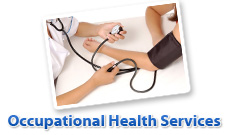Employee Drugs and Alcohol Testing
Prompted by a demand to assure well-being, health and safety of contractors and employees, business substance abuse policies have become more and more commonplace around Great Britain. However, there are still many misunderstandings surrounding the strategy, which might create apprehension among the workers involved in screening.
Employee Drugs and Alcohol Testing – Where exactly are the hazards?
Some people estimate that the impact of illegal drugs throughout the work environment is a trivial matter. Everyone has taken notice of Christmas anti-drink-driving television advertisements and as a consequence, recognise that drug driving and drink-driving is not safe, so shouldn’t we be able to depend upon everyone’s judgement? Sorry to say, around half of all roadside and industrial deaths across England and Scotland involve alcohol, drugs, or both together. Present statistics reveal that in excess of 70 % of illegal drug abusers are engaged in full-time employment, meaning that the typical drug abuser is, effectively, the average member of staff. The recent Home Office information place the number of 16 to 29-year-olds who have used controlled drugs throughout the last 12 months at almost 50% of that age range. Therefore, this is not somebody else’s issue, because it involves each and every business. Whilst the occasional use of illicit substances might not by default point to risk-taking and irresponsible attitudes within the industrial environment, this does substantially broaden the probability of workplace accidents, absenteeism, decreased productivity, damage to plant and equipment, being sued and a raised turnover of staff.
Employee Drugs and Alcohol Testing – What is your recommendation? Isn’t Drug screening in the workplace disruptive?
Plenty of companies only carry out employee drug screening in the event of an industrial accident, an incident or near miss, or in the event they find reasonable cause for concern or suspect that a member of staff may potentially be unsafe or unfit to be operating machinery. On account of the broad diversity of possible dangers associated with industrial businesses, many managers view it as completely proper to perform diagnostic tests on these occurrences, as a way to avoid them happening in the future.
However, random drug testing brings testing to the next level, whereby a predetermined sample of the employees is selected at random to volunteer a sample of urine and/or breath. This may sound intrusive, though it is quite typical for just five percent of the staff to be tested up to once in every 12 month period. This would mean that only one in 20 staff being drug screened, in other words, as a member of staff, your probability of being tested may be just a single time in every 20 years. Incredibly, this form of marginal testing has indeed been documented to decrease rates of failure from as much as 46% down to a low of two percent in as little as just a few months. This indicates that the run of the mill drug misuser found in the work environment isn’t hopelessly addicted, but is merely making decisions about their lifestyle which can possibly be changed toward a more positive end result.
Employee Drugs and Alcohol Testing. Might this be perceived as an infringement of an individuals’ human rights?
Whilst certain individuals within the company may be initially resistant to the prospect of on-site drug screening, the majority of them comprehend that this is primarily conducted to assure the safety of anybody within the working environment. So long as the extent of on-site drug screening is proportional to the possible dangers throughout the business and does not especially impact upon employee time outside of work, it doesn’t represent a danger to employee human rights. When it comes to the United States, over 98% of the richest 1000 corporations drug and alcohol screen their work force without any difficulties.
Is there any harm when abusing drugs and alcohol outside of the workplace?
Quite a few street drugs have indeed acquired a softer image as a result of their continued exposure in the country’s media. In actual fact, expressions including “recreational cocaine use” have been shown to cause a significant amount of harm in glossing over the dangers to young people. For some young people, the use of cocaine is much more habit-forming than heroin and, as a result cannot be abused recreationally without significant risk of addiction. Dependence aside, the level of cocaine purity has fallen from an average of forty five percent cocaine content in 2004 to a low of roughly 25% purity as of 2010 (with purity being as low as 9 percent being reported currently). Worryingly, the compounds used to add weight to the cocaine can be anything from local anaesthetics, carcinogenic pharmaceuticals, pet worming chemicals, through to insecticides. The underlying truth is you should never rely on a drug dealer.
Indeed, substances typically regarded as soft drugs nonetheless carry risks. Right now in England and Scotland, a shocking 92% of patients accepted for therapy for mental illness are heavy users of cannabis. bearing this in mind, drug testing the workplace truly possesses the opportunity to deal with wider antisocial and health related concerns as it comes to be more common.
For more information on workplace drug screening and also home drug test kits, browse through www.drug-aware.com
Information on the author: Christopher Evans is the Technical Director of Drug-Aware Ltd, a supplier of Employee Drugs and Alcohol Testing, alcohol and drug screening equipment, laboratory services together with alcohol and drugs awareness training. He has trained literally thousands of delegates spanning hundreds of organisations, HM Prison Service, the British police and hospitals and GP surgeries across the country.








